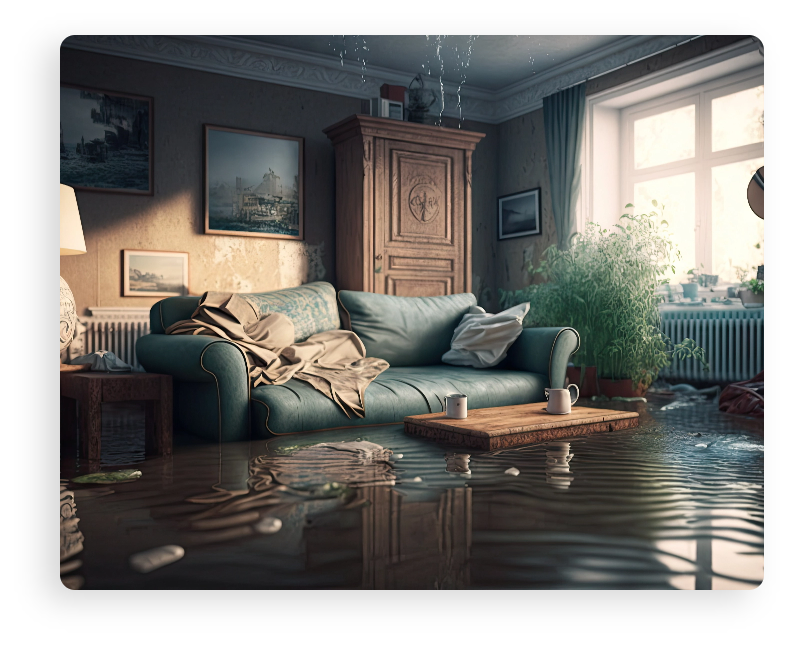Water Damage

Water damage restoration for homes refers to the process of mitigating and repairing the damage caused by water intrusion. It is crucial to address water damage promptly to prevent further structural damage, mold growth, and other potential issues.
It is advisable to contact professional water damage restoration companies with experience and expertise in handling these situations. They have the necessary equipment, knowledge, and resources to effectively restore your home after water damage and minimize further complications. Additionally, addressing the underlying cause of the water intrusion, such as fixing plumbing issues or improving drainage, is essential to prevent future water damage incidents.
The Steps of Water Damage Remediation
STEP 1.
Assessment and Inspection
A professional water damage restoration specialist assesses the extent of the damage and identifies the source of water intrusion. This step helps determine the appropriate course of action and develop a restoration plan.
STEP 2.
Water Extraction
The first priority is to remove standing water from the affected area. Industrial-grade pumps, wet vacuums, and other specialized equipment are used to extract water efficiently. The restoration team may also need to remove wet materials, such as carpets, furniture, and damaged belongings, to facilitate the drying process.
STEP 3.
Drying and Dehumidification
After water removal, the affected area is dried using high-powered air movers and dehumidifiers. This step helps eliminate excess moisture from surfaces, walls, and building materials. Monitoring equipment such as moisture meters and thermal imaging cameras are used to ensure proper drying.
STEP 4.
Mold Prevention
Water damage can create a favorable environment for mold growth. To prevent mold infestation, the restoration team may apply antimicrobial treatments to affected surfaces. If mold is already present, mold remediation procedures may be necessary.
STEP 5.
Structural Repairs
Water damage can compromise the integrity of structural components. The restoration process may involve repairs or replacements of damaged walls, flooring, insulation, and other affected elements. It is important to ensure that the structure is restored to its pre-damage condition to maintain safety and functionality.
STEP 6.
Monitoring and Documentation
Throughout the restoration process, regular monitoring is conducted to ensure that moisture levels are within acceptable ranges and that no further issues arise. Detailed documentation, including photographs and records of the restoration process, may be necessary for insurance claims or future reference.
Types of
Water Damage
Clean Water Damage
Dealing with clean water damage is relatively straightforward since it lacks harmful microorganisms. Such damage often occurs when a pipe bursts.
Gray Water Damage
Gray water damage takes place when a washing machine or dishwater malfunctions. Because this water may be contaminated, proper sanitation should be carried out.
Black Water Damage
Black water damage is the most dangerous kind of water damage and is most commonly a result of a sewer backup. This water is considered toxic, as it is riddled with chemicals, bacteria, viruses, pesticides, and more.
